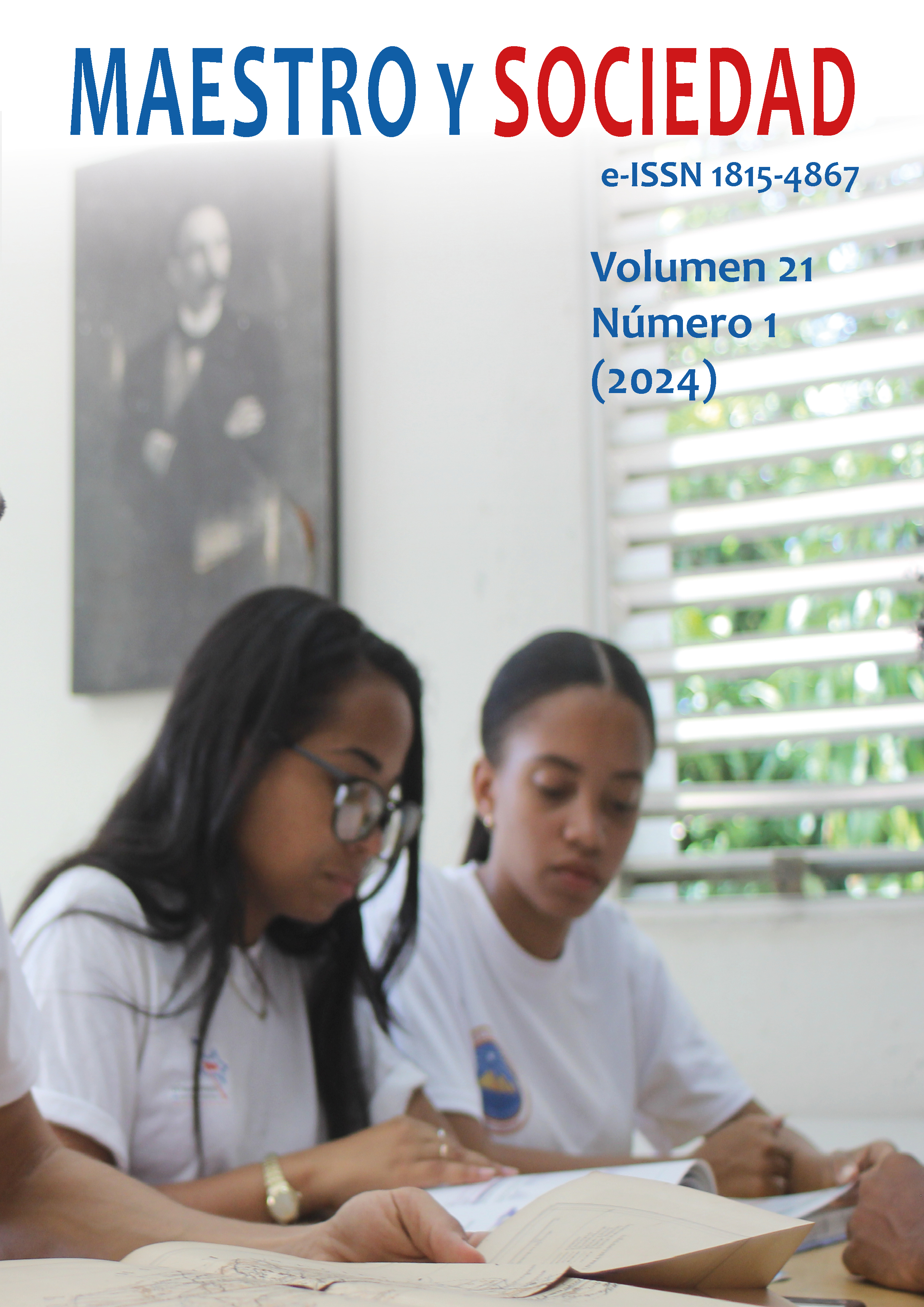Gamification in virtual environments for labor integration of people with intellectual disabilities
Keywords:
gamification, intellectual disability, labor integration, learning virtual environmentsAbstract
Introduction: The objective is to develop a gamification in a virtual environment for neurocognitive stimulation that favors the labor insertion of people with intellectual disabilities of 67%, quantified by the Ministry of Public Health and with a skill development test of 77% applied. by the disability project of the Ministry of Economic and Social Inclusion, belonging to the third level according to their abilities, at the Integral Development Center for people with intellectual disabilities in Loja, Ecuador. Materials and methods: Based on methodological criteria, it is of a descriptive explanatory level, supported by a case study supported by participatory action research, with the use of empirical methods such as observation, documentary analysis, measurement, theoretical as analytical-synthetic, inductive-deductive, modeling; as well as others typical of the study of disabilities; such as clinical history analysis, observation sheet, anxiety inventory, skills development sheet, neuropsychological questionnaire and multiple intelligence test, among others, that are part of the study. The investigative process was carried out through the application of interviews with managers of the Integral Development Center and centers where inclusion actions could be developed. Results: The origin of the disability,
limitations in cognitive development, barriers in work skills and inequality of opportunities for work were determined. Discussion: Gamification in virtual environments is an innovative strategy for the labor insertion of people with intellectual disabilities, it improves their quality of life, by using game elements to motivate, challenge the development of work skills and better understand the world of work. Conclusions: The proposal is timely because, by managing a virtual learning environment, students can access materials and resources from anywhere, at any time, which is particularly useful. For their part, the direct beneficiaries will be the students and their families.
References
Colección Unión Global, Molero, L., & del Valle, Y. (2021). Tecnología asistiva como plataforma para la educación inclusiva. Gamificación y discapacidad. Una alternativa socialmente responsable”, III.
Gardner, H. (2019). Inteligencias múltiples. Ediciones Paidós.
Giorgi, A. (1986). A phenomenological analysis of descriptions of concepts of learning obtained from a phenomenographic perspective. (Publikationerfraninstitutionen for pedagogik Goteborg Universitet.
González, L. (2019). Estimulación temprana en el desarrollo sensoperceptual en niños de 3 años del CAIPI
La Primavera. [Trabajo de grado. Universidad Especializada de las Américas, Panamá]. http://repositorio2.udelas.ac.pa/bitstream/handle/123456789/335/Estimulaci%C3%B3n%20temprana%20en%20el%20desarrollo%20sensoperceptual%20en%20ni%C3%B1
Marton, F., Dall´Alba, G., &Beaty, E. (1993). Conceptions of learning. International Journal of Educational Research.
Ministerio de InclusiónEconómica y Social. (2018). Norma Técnica para el servicio de atención en el hogar y la comunidad para personas con discapacidad.
Ministerio de Salud Pública del Ecuador. (2018). Criterios de selección y justificación. In Calificación de la discapacidad. Manual. (33, 34). Dirección Nacional de Normatización, MSP. http://salud.gob.ec.
MoineloDayli, C., & Campo Valdés, I. (2022). Inserción laboral, un camino seguro al futuro del educando con discapacidad intelectual. Revista Científica Pedagógica. Horizonte Pedagógico, 11(1).
Navarro, C., Pérez, I., &Femia, P. (2021). La gamificación en el ámbito educativo español: revisión sistemática. Retos, 42(507–516). https://doi.org/10.47197/retos.v42i0.87384
Portellano Pérez, J. A., Martínez Arias, M. d. R., & Mateos Mateos, R. (2012). CUMANES: Cuestionario de madurez neuropsicológica escolar: manual. TEA.
Saljö, R. (1979). Learning about learning. Higher Education.
Trigwell, K., Prosser, M., & Taylor, P. (1994). Qualitative differences in approaches to teaching first year university science. Higher Education.
Van Rossum, E.J., Deijkers, R., & Hamer, R. (1985). Students´ learning conceptions and their interpretation of significant educational concepts. Higher Education.
Van Rossum, E.J., & Schenk, S.M. (1984). The relationship between learning conception, study strategy and learning outcome. British Journal of Educational Psychology.
Published
How to Cite
Issue
Section
License
Copyright (c) 2024 Marjorie Stefanía Sarango Llivisaca, Joyce Elizabeth Jácome Valencia, Elsa Iris Montenegro Moracén

This work is licensed under a Creative Commons Attribution-NonCommercial-NoDerivatives 4.0 International License.
This journal provides immediate open access to its content, based on the principle that offering the public free access to research helps a greater global exchange of knowledge. Each author is responsible for the content of each of their articles.



























 Universidad de Oriente
Universidad de Oriente 